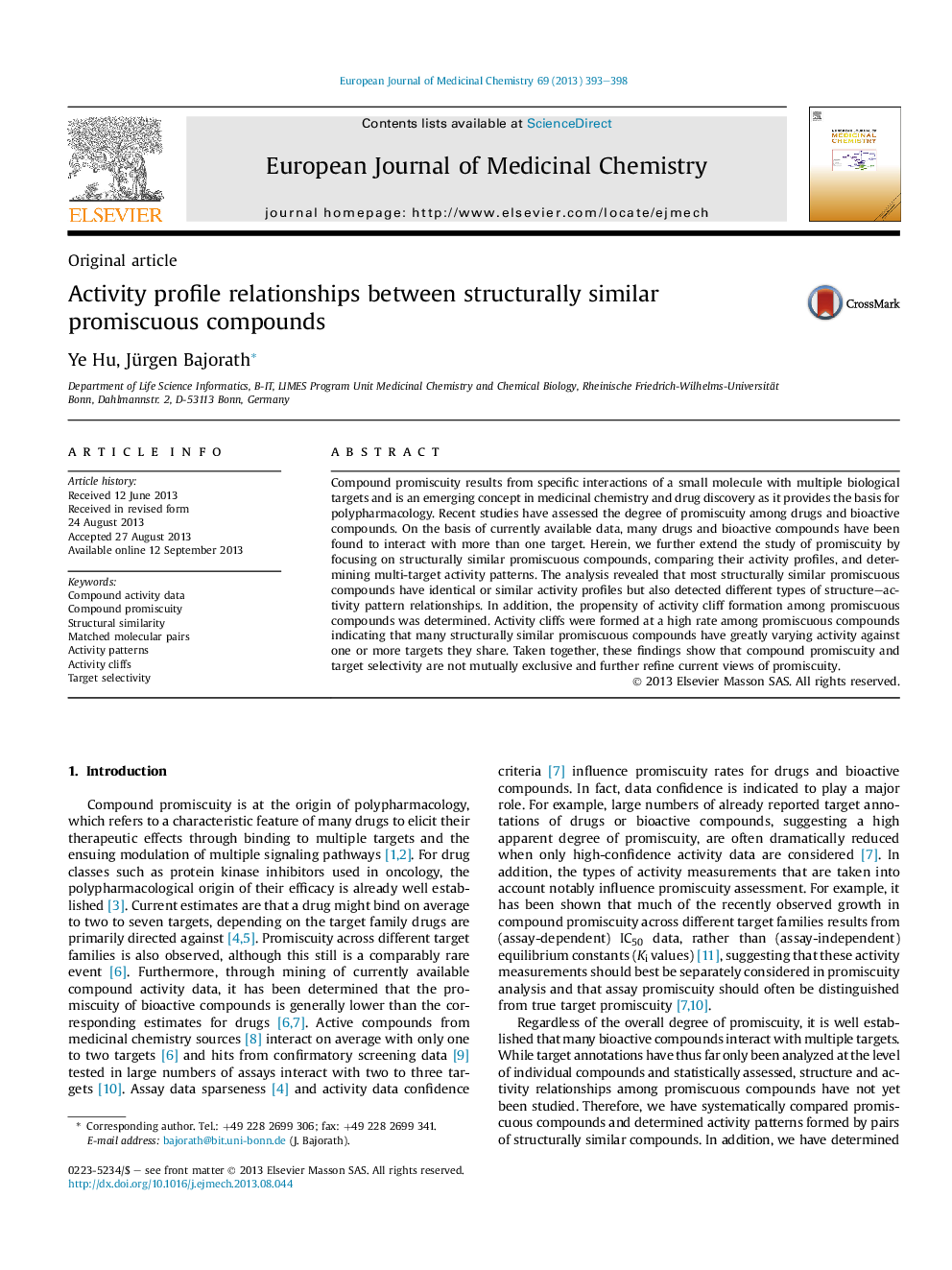| Article ID | Journal | Published Year | Pages | File Type |
|---|---|---|---|---|
| 1399012 | European Journal of Medicinal Chemistry | 2013 | 6 Pages |
•Structurally similar promiscuous compounds were studied.•Activity profiles and activity patterns were determined.•Activity profiles were often conserved but activity cliffs were frequently formed.•Similar promiscuous compounds often had varying activity against shared targets.•Compound promiscuity and target selectivity are not mutually exclusive.
Compound promiscuity results from specific interactions of a small molecule with multiple biological targets and is an emerging concept in medicinal chemistry and drug discovery as it provides the basis for polypharmacology. Recent studies have assessed the degree of promiscuity among drugs and bioactive compounds. On the basis of currently available data, many drugs and bioactive compounds have been found to interact with more than one target. Herein, we further extend the study of promiscuity by focusing on structurally similar promiscuous compounds, comparing their activity profiles, and determining multi-target activity patterns. The analysis revealed that most structurally similar promiscuous compounds have identical or similar activity profiles but also detected different types of structure–activity pattern relationships. In addition, the propensity of activity cliff formation among promiscuous compounds was determined. Activity cliffs were formed at a high rate among promiscuous compounds indicating that many structurally similar promiscuous compounds have greatly varying activity against one or more targets they share. Taken together, these findings show that compound promiscuity and target selectivity are not mutually exclusive and further refine current views of promiscuity.
Graphical abstractShown is a promiscuous compound forming activity patterns with neighbors. Potency profiles for multiple targets are displayed (“X”: no activity). Red frames indicate additional targets compared to the central compound.Figure optionsDownload full-size imageDownload as PowerPoint slide
